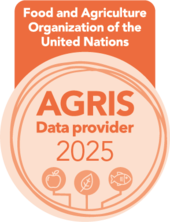Análisis de microorganismos funcionales y su relación con parámetros fisicoquímicos del suelo en un bosque reservado
DOI:
https://doi.org/10.57188/manglar.2024.002Resumo
Este estudio aborda la necesidad de entender la presencia microorganismos funcionales en suelos tropicales, proporcionando información valiosa para la conservación y manejo sostenible. Tiene como principal objetivo analizar la variabilidad de microorganismos funcionales en diferentes profundidades del suelo y las correlaciones con los parámetros fisicoquímicos. Para ello se recolectaron muestras de suelo de 15 puntos aleatorios en un bosque reservado y se analizaron propiedades fisicoquímicas y microbiológicas a dos profundidades (10 y 20 cm). Se cuantificaron los siguientes microorganismos funcionales: aerobios viables, lactobacilos, actinomicetos, hongos y bacterias fijadoras de nitrógeno utilizando protocolos específicos. Se empleó la prueba no paramétrica de Wilcoxon para determinar diferencias entre profundidades y el coeficiente de correlación de Pearson (|ρ| ≥ 0,8) para analizar correlaciones entre parámetros fisicoquímicos y microorganismos. Los resultados sugieren que la abundancia de microorganismos aerobios viables, Lactobacillus, Actinomicetos y Fungi disminuye con la profundidad del suelo, mientras que las bacterias fijadoras de nitrógeno no muestran diferencias significativas. La disminución de la abundancia se relaciona con factores como la disponibilidad de nutrientes y oxígeno y las condiciones microambientales. Existe una correlación positiva fuerte entre la cantidad de microorganismos aerobios viables y Lactobacillus con el contenido de fósforo, y una correlación negativa entre Actinomicetos y el contenido de Arcilla. Los Actinomicetos prefieren suelos arenosos, mientras que los Fungi prosperan en suelos ricos en materia orgánica. La correlación negativa entre Fungi y Actinomicetos sugiere competencia por recursos limitados y posibles interacciones químicas, como la producción de compuestos antibióticos por parte de los Actinomicetos. Este estudio demuestra que la comprensión detallada de la microbiota del suelo puede ofrecer nuevas oportunidades para mejorar las prácticas agrícolas, especialmente en términos de gestión de la fertilidad del suelo y sostenibilidad ambiental.
Downloads
Referências
Bader, B. R., Taban, S. K., Fahmi, A. H., Abood, M. A., & Hamdi, G. J. (2021). Potassium availability in soil amended with organic matter and phosphorous fertiliser under water stress during maize (Zea mays L) growth. Journal of the Saudi Society of Agricultural Sciences, 20(6), 390–394. https://doi.org/10.1016/J.JSSAS.2021.04.006
Baldrian, P. (2008). Enzymes of saprotrophic basidiomycetes. In British Mycological Society Symposia Series (Vol. 28, Issue C, pp. 19–41). Academic Press. https://doi.org/10.1016/S0275-0287(08)80004-5
Barrow, N. J. (2015). Soil phosphate chemistry and the P-sparing effect of previous phosphate applications. Plant and Soil, 397(1–2), 401–409. https://doi.org/10.1007/S11104-015-2514-5
Bastida, F., Eldridge, D. J., García, C., Kenny Png, G., Bardgett, R. D., & Delgado-Baquerizo, M. (2021). Soil microbial diversity–biomass relationships are driven by soil carbon content across global biomes. The ISME Journal, 15(7), 2081–2091. https://doi.org/10.1038/s41396-021-00906-0
Brady, N. C., & Weil, R. R. (2016). Nature and Properties of Soils, The 15th Edition. In Pearson Education.
Condron, L. M., Turner, B. L., & Cade-Menun, B. J. (2015). Chemistry and Dynamics of Soil Organic Phosphorus. Phosphorus: Agriculture and the Environment, 87–121. https://doi.org/10.2134/AGRONMONOGR46.C4
Davelos, A. L., Xiao, K., Samac, D. A., Martin, A. P., & Kinkel, L. L. (2004). Spatial variation in Streptomyces genetic composition and diversity in a prairie soil. Microbial Ecology, 48(4), 601–612. https://doi.org/10.1007/S00248-004-0031-9
De Boer, W., Folman, L. B., Summerbell, R. C., & Boddy, L. (2005). Living in a fungal world: impact of fungi on soil bacterial niche development. FEMS Microbiology Reviews, 29(4), 795–811. https://doi.org/10.1016/J.FEMSRE.2004.11.005
Fierer, N., Schimel, J. P., & Holden, P. A. (2003). Variations in microbial community composition through two soil depth profiles. Soil Biology and Biochemistry, 35(1), 167–176. https://doi.org/10.1016/S0038-0717(02)00251-1
Foy, C. D. (2015). Physiological Effects of Hydrogen, Aluminum, and Manganese Toxicities in Acid Soil. Soil Acidity and Liming, 57–97. https://doi.org/10.2134/AGRONMONOGR12.2ED.C2
Frey, S. D., Knorr, M., Parrent, J. L., & Simpson, R. T. (2004). Chronic nitrogen enrichment affects the structure and function of the soil microbial community in temperate hardwood and pine forests. Forest Ecology and Management, 196(1), 159–171. https://doi.org/10.1016/J.FORECO.2004.03.018
Gayan, A., Borah, P., Nath, D., & Kataki, R. (2023). Soil microbial diversity, soil health and agricultural sustainability. In Sustainable Agriculture and the Environment (pp. 107–126). Academic Press. https://doi.org/10.1016/B978-0-323-90500-8.00006-3
Hao, J., Chai, Y. N., Lopes, L. D., Ordóñez, R. A., Wright, E. E., Archontoulis, S., & Schachtman, D. P. (2021). The Effects of Soil Depth on the Structure of Microbial Communities in Agricultural Soils in Iowa (United States). Applied and Environmental Microbiology, 87(4). https://doi.org/10.1128/AEM.02673-20
Hartmann, M., & Six, J. (2022). Soil structure and microbiome functions in agroecosystems. Nature Reviews Earth & Environment, 4(1), 4–18. https://doi.org/10.1038/s43017-022-00366-w
Herridge, D. F., Peoples, M. B., & Boddey, R. M. (2008). Global inputs of biological nitrogen fixation in agricultural systems. Plant and Soil, 311(1–2), 1–18. https://doi.org/10.1007/S11104-008-9668-3
Kinraide, T. B. (1991). Identity of the rhizotoxic aluminium species. Plant and Soil, 134(1), 167–178. https://doi.org/10.1007/BF00010729
Kopittke, P. M., Menzies, N. W., Wang, P., McKenna, B. A., & Lombi, E. (2019). Soil and the intensification of agriculture for global food security. Environment International, 132, 105078. https://doi.org/10.1016/J.ENVINT.2019.105078
Marschner, P. (2011). Marschner’s Mineral Nutrition of Higher Plants: Third Edition. Marschner’s Mineral Nutrition of Higher Plants: Third Edition, 1–651. https://doi.org/10.1016/C2009-0-63043-9
Mus, F., Crook, M. B., Garcia, K., Costas, A. G., et al. (2016). Symbiotic Nitrogen Fixation and the Challenges to Its Extension to Nonlegumes. Applied and Environmental Microbiology, 82(13), 3698–3710. https://doi.org/10.1128/AEM.01055-16
Nieder, R., Benbi, D. K., & Reichl, F. X. (2018). Soil components and human health. In Soil Components and Human Health. Springer Netherlands. https://doi.org/10.1007/978-94-024-1222-2
Rajkumar, M., Ae, N., Prasad, M. N. V., & Freitas, H. (2010). Potential of siderophore-producing bacteria for improving heavy metal phytoextraction. Trends in Biotechnology, 28(3), 142–149. https://doi.org/10.1016/J.TIBTECH.2009.12.002
Reed, S. C., Cleveland, C. C., & Townsend, A. R. (2011). Functional Ecology of Free-Living Nitrogen Fixation: A Contemporary Perspective. Annual Reviews, 42. https://doi.org/10.1146/ANNUREV-ECOLSYS-102710-145034
Schjønning, P., Thomsen, I. K., Møberg, J. P., De Jonge, H., Kristensen, K., & Christensen, B. T. (1999). Turnover of organic matter in differently textured soils: I. Physical characteristics of structurally disturbed and intact soils. Geoderma, 89(3–4), 177–198. https://doi.org/10.1016/S0016-7061(98)00083-4
Schroeckh, V., Scherlach, K., Nützmann, H. W., Shelest, E., Schmidt-Heck, W., Schuemann, J., Martin, K., Hertweck, C., & Brakhage, A. A. (2009). Intimate bacterial-fungal interaction triggers biosynthesis of archetypal polyketides in Aspergillus nidulans. Proceedings of the National Academy of Sciences of the United States of America, 106(34), 14558–14563. https://doi.org/10.1073/PNAS.0901870106
Six, J., Frey, S. D., Thiet, R. K., & Batten, K. M. (2006). Bacterial and Fungal Contributions to Carbon Sequestration in Agroecosystems. Soil Science Society of America Journal, 70(2), 555–569. https://doi.org/10.2136/SSSAJ2004.0347
Sparks, D. L. (2002). Environmental soil chemistry. Elsevier.
Stevenson, F. J., & Cole, M. A. (Michael A.). (1999). Cycles of soil: carbon, nitrogen, phosphorus, sulfur, micronutrients. Wiley.
Swift, M. J. (Michael J., Heal, O. W., & Anderson, J. M. (Jonathan M. (1979). Decomposition in terrestrial ecosystems. In Studies in ecology (USA). University of California Press. https://doi.org/10.3/JQUERY-UI.JS
Wang, P., Marsh, E. L., Ainsworth, E. A., Leakey, A. D. B., Sheflin, A. M., & Schachtman, D. P. (2017). Shifts in microbial communities in soil, rhizosphere and roots of two major crop systems under elevated CO2 and O3. Scientific Reports, 7(1), 1–12. https://doi.org/10.1038/s41598-017-14936-2
Xia, Q., Rufty, T., & Shi, W. (2020). Soil microbial diversity and composition: Links to soil texture and associated properties. Soil Biology and Biochemistry, 149, 107953. https://doi.org/10.1016/J.SOILBIO.2020.107953
Xu, P., Sun, C. X., Ye, X. Z., Xiao, W. D., Zhang, Q., & Wang, Q. (2016). The effect of biochar and crop straws on heavy metal bioavailability and plant accumulation in a Cd and Pb polluted soil. Ecotoxicology and Environmental Safety, 132, 94–100. https://doi.org/10.1016/J.ECOENV.2016.05.031
Xu, T., Chen, X., Hou, Y., & Zhu, B. (2021). Changes in microbial biomass, community composition and diversity, and functioning with soil depth in two alpine ecosystems on the Tibetan plateau. Plant and Soil, 459(1–2), 137–153. https://doi.org/10.1007/S11104-020-04712-Z
Zehr, J. P., Jenkins, B. D., Short, S. M., & Steward, G. F. (2003). Nitrogenase gene diversity and microbial community structure: a cross-system comparison. Environmental Microbiology, 5(7), 539–554. https://doi.org/10.1046/J.1462-2920.2003.00451.X
Zhao, H., Zheng, W., Zhang, S., Gao, W., & Fan, Y. (2021). Soil microbial community variation with time and soil depth in Eurasian Steppe (Inner Mongolia, China). Annals of Microbiology, 71(1), 1–12. https://doi.org/10.1186/S13213-021-01633-9/FIGURES/4
Zhao, M., Wang, M., Zhao, Y., Hu, N., Qin, L., Ren, Z., Wang, G., & Jiang, M. (2022). Soil microbial abundance was more affected by soil depth than the altitude in peatlands. Frontiers in Microbiology, 13. https://doi.org/10.3389/fmicb.2022.1068540
Downloads
Publicado
Edição
Secção
Licença
Direitos de Autor (c) 2024 Guillermo Sales-Ordoñez, Casiano Aguirre-Escalante, Alberto Franco Cerna-Cueva, Doive Salvador Ortega-Silva, Víctor Ernesto Pérez-Hernández, Nicolas Walter Aguilar-Carazas, Manuel Emilio Reategui-Inga

Este trabalho encontra-se publicado com a Licença Internacional Creative Commons Atribuição 4.0.

Manglar is an open access journal distributed under the terms and conditions of Creative Commons Attribution 4.0 International license









